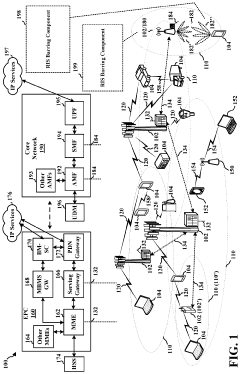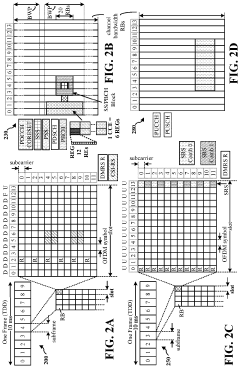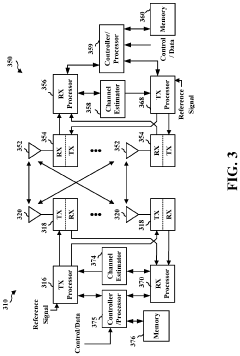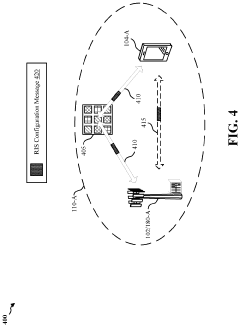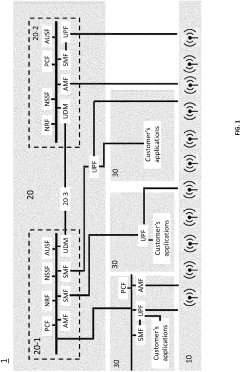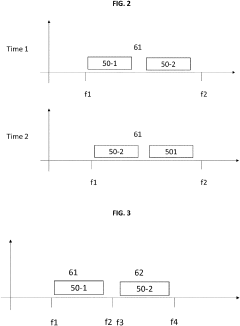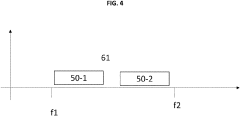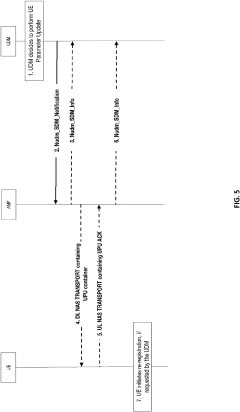What are the Challenges of 5G UC in Remote Island Connectivity?
JUL 18, 20259 MIN READ
Generate Your Research Report Instantly with AI Agent
Patsnap Eureka helps you evaluate technical feasibility & market potential.
5G UC Remote Island Background and Objectives
The evolution of mobile communication technologies has brought unprecedented connectivity to urban areas, but remote islands have long been left behind in this digital revolution. The advent of 5G Use Cases (UC) presents a promising opportunity to bridge this connectivity gap, offering potential solutions to the unique challenges faced by isolated island communities. This technological leap aims to transform the socio-economic landscape of these regions by enabling advanced applications such as telemedicine, remote education, and smart agriculture.
The primary objective of implementing 5G UC in remote island settings is to overcome the geographical barriers that have historically hindered reliable and high-speed connectivity. By leveraging the enhanced capabilities of 5G networks, including increased bandwidth, lower latency, and improved spectrum efficiency, the goal is to provide island inhabitants with access to services and opportunities previously unavailable due to their isolated locations.
Examining the historical context, remote islands have traditionally relied on satellite communications or limited terrestrial networks, which often resulted in slow, unreliable, and expensive internet access. The progression from 2G to 4G technologies brought incremental improvements but failed to fully address the unique challenges posed by island topography and sparse population distribution. The introduction of 5G UC represents a significant leap forward, with the potential to revolutionize connectivity in these underserved areas.
The technological trajectory of 5G UC for remote islands is focused on developing innovative solutions that can adapt to the harsh environmental conditions, limited infrastructure, and energy constraints typical of island settings. This includes the exploration of advanced antenna technologies, dynamic spectrum sharing, and energy-efficient network architectures tailored to the specific needs of island communities.
As we delve into the current state of 5G UC deployment in remote islands, it becomes evident that while the technology holds immense promise, significant challenges remain. These include the high cost of infrastructure deployment, the need for robust and weather-resistant equipment, and the development of sustainable power solutions. Additionally, the regulatory landscape and spectrum allocation policies in many island nations may require adaptation to fully leverage the potential of 5G technologies.
The successful implementation of 5G UC in remote islands is expected to catalyze economic growth, improve healthcare outcomes, enhance educational opportunities, and foster greater social inclusion. By enabling real-time communication and data exchange, these technologies have the potential to transform industries such as tourism, fisheries, and renewable energy, creating new avenues for sustainable development in island economies.
The primary objective of implementing 5G UC in remote island settings is to overcome the geographical barriers that have historically hindered reliable and high-speed connectivity. By leveraging the enhanced capabilities of 5G networks, including increased bandwidth, lower latency, and improved spectrum efficiency, the goal is to provide island inhabitants with access to services and opportunities previously unavailable due to their isolated locations.
Examining the historical context, remote islands have traditionally relied on satellite communications or limited terrestrial networks, which often resulted in slow, unreliable, and expensive internet access. The progression from 2G to 4G technologies brought incremental improvements but failed to fully address the unique challenges posed by island topography and sparse population distribution. The introduction of 5G UC represents a significant leap forward, with the potential to revolutionize connectivity in these underserved areas.
The technological trajectory of 5G UC for remote islands is focused on developing innovative solutions that can adapt to the harsh environmental conditions, limited infrastructure, and energy constraints typical of island settings. This includes the exploration of advanced antenna technologies, dynamic spectrum sharing, and energy-efficient network architectures tailored to the specific needs of island communities.
As we delve into the current state of 5G UC deployment in remote islands, it becomes evident that while the technology holds immense promise, significant challenges remain. These include the high cost of infrastructure deployment, the need for robust and weather-resistant equipment, and the development of sustainable power solutions. Additionally, the regulatory landscape and spectrum allocation policies in many island nations may require adaptation to fully leverage the potential of 5G technologies.
The successful implementation of 5G UC in remote islands is expected to catalyze economic growth, improve healthcare outcomes, enhance educational opportunities, and foster greater social inclusion. By enabling real-time communication and data exchange, these technologies have the potential to transform industries such as tourism, fisheries, and renewable energy, creating new avenues for sustainable development in island economies.
Market Analysis for Remote Island Connectivity
The market for remote island connectivity presents unique challenges and opportunities for 5G UC (Ultra-Reliable Low-Latency Communication) technology. Remote islands often face significant connectivity issues due to their geographical isolation, limited infrastructure, and small population sizes. However, these factors also create a niche market with specific demands that 5G UC can potentially address.
The demand for reliable, high-speed connectivity in remote island communities is driven by several factors. Tourism, a crucial economic sector for many islands, requires robust communication infrastructure to meet the expectations of visitors and support digital services. Additionally, essential services such as healthcare, education, and emergency response systems increasingly rely on advanced telecommunications to bridge the gap between remote locations and mainland resources.
The potential market size for 5G UC in remote island connectivity is influenced by the global distribution of inhabited islands. While precise figures vary, there are thousands of inhabited islands worldwide, with populations ranging from a few hundred to several million. The Asia-Pacific region, particularly countries like Indonesia and the Philippines, represents a significant portion of this market due to their archipelagic nature.
Government initiatives and international development programs often play a crucial role in driving the market for remote island connectivity. Many nations and organizations recognize the importance of digital inclusion and are investing in programs to extend broadband access to remote areas. These initiatives can create substantial opportunities for 5G UC deployment, as governments seek cutting-edge solutions to address connectivity challenges.
The private sector, particularly telecommunications companies and satellite internet providers, is also showing increased interest in this market. As traditional connectivity solutions struggle to meet the demands of remote island communities, there is growing recognition of the potential for innovative technologies like 5G UC to fill this gap.
However, the market for 5G UC in remote island connectivity faces several challenges. The high cost of infrastructure deployment in remote locations, coupled with the relatively small consumer base, can make it difficult to justify investments based on traditional return-on-investment models. Additionally, regulatory hurdles and spectrum allocation issues in different jurisdictions can complicate the rollout of 5G UC technology.
Despite these challenges, the market for remote island connectivity is expected to grow as the global demand for ubiquitous, high-quality internet access continues to rise. The unique capabilities of 5G UC, such as its ability to provide low-latency, high-reliability connections, position it as a promising solution for overcoming the geographical and infrastructural limitations of remote island settings.
The demand for reliable, high-speed connectivity in remote island communities is driven by several factors. Tourism, a crucial economic sector for many islands, requires robust communication infrastructure to meet the expectations of visitors and support digital services. Additionally, essential services such as healthcare, education, and emergency response systems increasingly rely on advanced telecommunications to bridge the gap between remote locations and mainland resources.
The potential market size for 5G UC in remote island connectivity is influenced by the global distribution of inhabited islands. While precise figures vary, there are thousands of inhabited islands worldwide, with populations ranging from a few hundred to several million. The Asia-Pacific region, particularly countries like Indonesia and the Philippines, represents a significant portion of this market due to their archipelagic nature.
Government initiatives and international development programs often play a crucial role in driving the market for remote island connectivity. Many nations and organizations recognize the importance of digital inclusion and are investing in programs to extend broadband access to remote areas. These initiatives can create substantial opportunities for 5G UC deployment, as governments seek cutting-edge solutions to address connectivity challenges.
The private sector, particularly telecommunications companies and satellite internet providers, is also showing increased interest in this market. As traditional connectivity solutions struggle to meet the demands of remote island communities, there is growing recognition of the potential for innovative technologies like 5G UC to fill this gap.
However, the market for 5G UC in remote island connectivity faces several challenges. The high cost of infrastructure deployment in remote locations, coupled with the relatively small consumer base, can make it difficult to justify investments based on traditional return-on-investment models. Additionally, regulatory hurdles and spectrum allocation issues in different jurisdictions can complicate the rollout of 5G UC technology.
Despite these challenges, the market for remote island connectivity is expected to grow as the global demand for ubiquitous, high-quality internet access continues to rise. The unique capabilities of 5G UC, such as its ability to provide low-latency, high-reliability connections, position it as a promising solution for overcoming the geographical and infrastructural limitations of remote island settings.
5G UC Challenges in Island Environments
The implementation of 5G UC (Ultra-Reliable Low-Latency Communication) in remote island environments presents unique challenges due to geographical isolation, limited infrastructure, and harsh environmental conditions. These factors significantly impact the deployment and performance of 5G networks, requiring innovative solutions to overcome the inherent obstacles.
One of the primary challenges is the limited availability of terrestrial infrastructure on remote islands. The absence of extensive fiber optic networks and robust power grids poses significant hurdles for establishing reliable 5G connectivity. This limitation necessitates the development of alternative backhaul solutions and energy-efficient network architectures tailored to island environments.
The geographical isolation of remote islands also complicates network planning and optimization. The sparse population distribution and irregular terrain typical of island landscapes make it challenging to achieve comprehensive coverage while maintaining cost-effectiveness. This scenario demands adaptive network designs that can efficiently serve both densely populated coastal areas and sparsely inhabited inland regions.
Environmental factors pose additional challenges to 5G UC deployment in island settings. Coastal areas are often subject to harsh weather conditions, including high humidity, salt corrosion, and extreme temperatures. These elements can adversely affect the longevity and performance of network equipment, necessitating the development of ruggedized hardware and protective measures to ensure reliable operation in such demanding environments.
The limited economic scale of remote island communities presents another obstacle. The high costs associated with deploying and maintaining advanced 5G infrastructure may not be justified by the potential return on investment in areas with small populations. This economic challenge calls for innovative business models and government initiatives to make 5G UC deployment financially viable in these underserved regions.
Spectrum allocation and management in island environments also present unique challenges. The isolation of islands may reduce interference from neighboring networks, but it also limits the options for spectrum sharing and coordination. Efficient spectrum utilization becomes crucial to maximize the available bandwidth and meet the diverse needs of island communities.
Lastly, the integration of 5G UC with existing communication systems on remote islands poses interoperability challenges. Many islands rely on a mix of legacy technologies, including satellite communications and older cellular networks. Ensuring seamless coexistence and gradual migration to 5G UC while maintaining essential services requires careful planning and implementation strategies.
Addressing these challenges demands a multifaceted approach that combines technological innovation, policy support, and collaborative efforts between stakeholders. By developing tailored solutions for island environments, the potential of 5G UC can be harnessed to bridge the digital divide and unlock new opportunities for remote island communities.
One of the primary challenges is the limited availability of terrestrial infrastructure on remote islands. The absence of extensive fiber optic networks and robust power grids poses significant hurdles for establishing reliable 5G connectivity. This limitation necessitates the development of alternative backhaul solutions and energy-efficient network architectures tailored to island environments.
The geographical isolation of remote islands also complicates network planning and optimization. The sparse population distribution and irregular terrain typical of island landscapes make it challenging to achieve comprehensive coverage while maintaining cost-effectiveness. This scenario demands adaptive network designs that can efficiently serve both densely populated coastal areas and sparsely inhabited inland regions.
Environmental factors pose additional challenges to 5G UC deployment in island settings. Coastal areas are often subject to harsh weather conditions, including high humidity, salt corrosion, and extreme temperatures. These elements can adversely affect the longevity and performance of network equipment, necessitating the development of ruggedized hardware and protective measures to ensure reliable operation in such demanding environments.
The limited economic scale of remote island communities presents another obstacle. The high costs associated with deploying and maintaining advanced 5G infrastructure may not be justified by the potential return on investment in areas with small populations. This economic challenge calls for innovative business models and government initiatives to make 5G UC deployment financially viable in these underserved regions.
Spectrum allocation and management in island environments also present unique challenges. The isolation of islands may reduce interference from neighboring networks, but it also limits the options for spectrum sharing and coordination. Efficient spectrum utilization becomes crucial to maximize the available bandwidth and meet the diverse needs of island communities.
Lastly, the integration of 5G UC with existing communication systems on remote islands poses interoperability challenges. Many islands rely on a mix of legacy technologies, including satellite communications and older cellular networks. Ensuring seamless coexistence and gradual migration to 5G UC while maintaining essential services requires careful planning and implementation strategies.
Addressing these challenges demands a multifaceted approach that combines technological innovation, policy support, and collaborative efforts between stakeholders. By developing tailored solutions for island environments, the potential of 5G UC can be harnessed to bridge the digital divide and unlock new opportunities for remote island communities.
Current 5G UC Solutions for Remote Areas
01 Network architecture for URLLC in 5G
Specialized network architectures are designed to support Ultra-Reliable and Low-Latency Communication (URLLC) in 5G networks. These architectures focus on optimizing resource allocation, reducing packet transmission delays, and enhancing reliability through techniques such as network slicing and edge computing.- Network architecture for URLLC: 5G Ultra-Reliable and Low-Latency Communication (URLLC) requires specific network architectures to meet stringent performance requirements. This includes optimizing radio access networks, core networks, and edge computing resources to minimize latency and enhance reliability. Advanced techniques such as network slicing and dynamic resource allocation are employed to ensure dedicated resources for URLLC services.
- Radio resource management for URLLC: Efficient radio resource management is crucial for URLLC in 5G networks. This involves advanced scheduling algorithms, grant-free transmission schemes, and flexible numerology to reduce latency and improve reliability. Techniques such as short transmission time intervals (TTI) and mini-slots are utilized to enable faster data transmission and processing.
- Multi-connectivity and diversity techniques: To enhance reliability and reduce latency, 5G URLLC employs multi-connectivity and diversity techniques. This includes dual connectivity, carrier aggregation, and packet duplication across multiple transmission paths. These methods improve the chances of successful data delivery and help maintain ultra-reliable connections even in challenging network conditions.
- QoS management and traffic prioritization: Quality of Service (QoS) management and traffic prioritization are essential for URLLC in 5G networks. This involves implementing mechanisms to identify and prioritize URLLC traffic, ensuring that critical data is transmitted with minimal delay and maximum reliability. Advanced queuing techniques and preemptive scheduling are used to meet strict latency requirements.
- Edge computing and distributed network intelligence: 5G URLLC leverages edge computing and distributed network intelligence to reduce end-to-end latency and improve reliability. By moving computing resources closer to the end-users and implementing intelligent decision-making at the network edge, URLLC applications can benefit from faster processing and reduced backhaul traffic. This approach also enables more efficient use of network resources and improved scalability.
02 Radio resource management for URLLC
Advanced radio resource management techniques are employed to meet the stringent requirements of URLLC. These include dynamic scheduling algorithms, flexible frame structures, and adaptive transmission schemes that prioritize low-latency and high-reliability traffic.Expand Specific Solutions03 URLLC for industrial applications
URLLC is particularly crucial for industrial applications requiring real-time control and automation. Specialized protocols and mechanisms are developed to ensure ultra-low latency and high reliability in industrial settings, enabling applications such as remote surgery and autonomous vehicles.Expand Specific Solutions04 Multi-connectivity solutions for URLLC
Multi-connectivity solutions are implemented to enhance the reliability and reduce latency in 5G URLLC. These solutions involve simultaneous connections to multiple base stations or radio access technologies, ensuring seamless communication even in challenging network conditions.Expand Specific Solutions05 AI and machine learning for URLLC optimization
Artificial intelligence and machine learning techniques are utilized to optimize URLLC performance in 5G networks. These technologies enable predictive resource allocation, intelligent network slicing, and adaptive transmission strategies to meet the demanding requirements of ultra-reliable and low-latency communications.Expand Specific Solutions
Key Players in 5G UC and Remote Networking
The 5G UC (Ultra-Capacity) connectivity in remote islands presents a complex competitive landscape. The market is in its early growth stage, with significant potential for expansion due to increasing demand for high-speed connectivity in isolated areas. The global 5G market size is projected to reach $667.90 billion by 2026, with remote connectivity solutions contributing to this growth. Technologically, the field is rapidly evolving, with major players like Ericsson, Samsung, Huawei, and ZTE leading in infrastructure development. These companies are investing heavily in R&D to overcome challenges such as signal propagation over water and limited power sources. Qualcomm and LG Electronics are focusing on device compatibility, while regional telecom operators like Deutsche Telekom and China Mobile are exploring implementation strategies for island networks.
Telefonaktiebolaget LM Ericsson
Technical Solution: Ericsson's approach to addressing 5G UC challenges in remote island connectivity focuses on a multi-faceted solution. They have developed a compact, energy-efficient Radio System that can be easily deployed in remote locations[1]. This system incorporates advanced antenna technologies, such as Massive MIMO, to improve coverage and capacity in challenging environments. Ericsson has also implemented network slicing capabilities, allowing for optimized resource allocation for different use cases on the same physical infrastructure[2]. To tackle power constraints, they've integrated renewable energy solutions and smart power management systems into their equipment. Additionally, Ericsson has developed satellite backhaul integration to provide connectivity where fiber deployment is impractical[3]. Their Cloud RAN technology enables centralized processing, reducing the need for complex on-site equipment in remote areas.
Strengths: Comprehensive solution addressing multiple challenges, energy efficiency, and adaptability to remote environments. Weaknesses: Potential high initial deployment costs and reliance on satellite connectivity which may introduce latency issues.
Huawei Technologies Co., Ltd.
Technical Solution: Huawei's approach to 5G UC challenges in remote island connectivity centers on their RuralStar Pro solution. This innovative system is designed specifically for remote and rural areas, integrating base station and satellite backhaul into a single unit[1]. The solution uses solar power, making it suitable for off-grid locations. Huawei has also developed advanced beamforming techniques to extend coverage range and penetration in challenging terrains[2]. Their 5G microwave solution provides a cost-effective alternative to fiber for backhaul in remote areas. To address spectrum efficiency, Huawei implements dynamic spectrum sharing technology, allowing 4G and 5G to coexist on the same frequency bands[3]. They've also developed AI-powered network optimization tools to ensure optimal performance with minimal on-site maintenance requirements.
Strengths: Purpose-built for remote areas, energy-efficient, and low maintenance requirements. Weaknesses: Potential limitations in capacity compared to urban solutions and dependence on favorable weather conditions for solar power.
Innovative 5G UC Technologies for Islands
Contention-free RIS handover via barring
PatentPendingUS20240107423A1
Innovation
- Implementing a method where a base station can bar specific RISs for UE communication, using barring indications to prevent overloading and improve signal quality by dynamically managing RIS resources, allowing UE to refrain from communicating with certain RISs based on configuration messages.
Network slicing based campus networks
PatentActiveUS20230189133A1
Innovation
- A 5G network architecture with functionally separated 5GC instances, including a central cloud hosting both public and private networks as Network Slices, with Unified Data Management and Network Slice Selection Functionality, allowing for isolated and efficient operation by sharing components and tools while ensuring data sovereignty and security.
Environmental Impact of 5G UC on Islands
The implementation of 5G UC (Ultra-Capacity) networks on remote islands presents unique environmental challenges that must be carefully considered. The installation of 5G infrastructure, including base stations, antennas, and supporting equipment, can have significant impacts on the delicate ecosystems found in island environments. These impacts range from physical disturbances during construction to long-term effects on wildlife and natural habitats.
One of the primary concerns is the potential disruption to local flora and fauna during the construction and maintenance of 5G infrastructure. The clearing of vegetation for tower sites and access roads can lead to habitat fragmentation and loss, particularly in areas with endemic species. Additionally, the introduction of non-native species during construction activities poses a risk to the island's biodiversity.
The visual impact of 5G towers and antennas on the island's landscape is another important consideration. Many remote islands rely on tourism as a significant source of income, and the presence of conspicuous telecommunications infrastructure may detract from the natural beauty that attracts visitors. This necessitates careful planning and design to minimize the visual footprint of 5G installations.
Energy consumption is a critical factor in the environmental impact of 5G UC on islands. Remote locations often rely on diesel generators for power, which contribute to air pollution and greenhouse gas emissions. The increased energy demands of 5G networks may exacerbate these issues unless sustainable energy solutions, such as solar or wind power, are integrated into the infrastructure design.
Electromagnetic radiation from 5G antennas has raised concerns about potential effects on wildlife, particularly birds and insects. While research in this area is ongoing, precautionary measures may be necessary to mitigate any potential negative impacts on local ecosystems. This could include careful placement of antennas and monitoring of wildlife populations in the vicinity of 5G installations.
Waste management is another environmental challenge associated with 5G UC deployment on islands. The limited land area and often inadequate waste disposal facilities on remote islands make it crucial to implement proper e-waste management strategies for outdated equipment and packaging materials. This includes planning for the eventual decommissioning and recycling of 5G infrastructure components.
Climate change and rising sea levels pose additional risks to 5G infrastructure on islands. The placement of equipment must take into account potential flooding and erosion, which may require adaptive strategies and resilient design to ensure long-term sustainability of the network.
To address these environmental concerns, it is essential to conduct thorough environmental impact assessments before implementing 5G UC on remote islands. These assessments should inform the development of comprehensive environmental management plans that include mitigation measures, monitoring protocols, and adaptive management strategies. By proactively addressing the environmental impacts of 5G UC, it is possible to balance the benefits of improved connectivity with the preservation of island ecosystems.
One of the primary concerns is the potential disruption to local flora and fauna during the construction and maintenance of 5G infrastructure. The clearing of vegetation for tower sites and access roads can lead to habitat fragmentation and loss, particularly in areas with endemic species. Additionally, the introduction of non-native species during construction activities poses a risk to the island's biodiversity.
The visual impact of 5G towers and antennas on the island's landscape is another important consideration. Many remote islands rely on tourism as a significant source of income, and the presence of conspicuous telecommunications infrastructure may detract from the natural beauty that attracts visitors. This necessitates careful planning and design to minimize the visual footprint of 5G installations.
Energy consumption is a critical factor in the environmental impact of 5G UC on islands. Remote locations often rely on diesel generators for power, which contribute to air pollution and greenhouse gas emissions. The increased energy demands of 5G networks may exacerbate these issues unless sustainable energy solutions, such as solar or wind power, are integrated into the infrastructure design.
Electromagnetic radiation from 5G antennas has raised concerns about potential effects on wildlife, particularly birds and insects. While research in this area is ongoing, precautionary measures may be necessary to mitigate any potential negative impacts on local ecosystems. This could include careful placement of antennas and monitoring of wildlife populations in the vicinity of 5G installations.
Waste management is another environmental challenge associated with 5G UC deployment on islands. The limited land area and often inadequate waste disposal facilities on remote islands make it crucial to implement proper e-waste management strategies for outdated equipment and packaging materials. This includes planning for the eventual decommissioning and recycling of 5G infrastructure components.
Climate change and rising sea levels pose additional risks to 5G infrastructure on islands. The placement of equipment must take into account potential flooding and erosion, which may require adaptive strategies and resilient design to ensure long-term sustainability of the network.
To address these environmental concerns, it is essential to conduct thorough environmental impact assessments before implementing 5G UC on remote islands. These assessments should inform the development of comprehensive environmental management plans that include mitigation measures, monitoring protocols, and adaptive management strategies. By proactively addressing the environmental impacts of 5G UC, it is possible to balance the benefits of improved connectivity with the preservation of island ecosystems.
Regulatory Framework for Remote 5G UC
The regulatory framework for remote 5G UC deployment in island settings presents unique challenges and considerations. Governments and regulatory bodies must balance the need for connectivity with environmental protection, spectrum allocation, and infrastructure development.
One of the primary regulatory concerns is spectrum allocation. Remote islands often have limited spectrum availability, requiring careful planning and coordination to ensure efficient use of available frequencies. Regulators may need to implement flexible spectrum licensing models that account for the specific needs of remote areas, such as dynamic spectrum access or shared spectrum approaches.
Environmental regulations play a crucial role in remote 5G UC deployments. Many islands are ecologically sensitive areas, necessitating strict guidelines for infrastructure installation and maintenance. Regulators must establish clear environmental impact assessment procedures and enforce measures to minimize the ecological footprint of 5G networks.
Infrastructure sharing regulations are particularly relevant in remote island contexts. To reduce costs and environmental impact, regulators may encourage or mandate the sharing of passive infrastructure, such as towers and power systems, among multiple operators. This approach can help overcome the economic challenges of deploying 5G UC in sparsely populated areas.
Regulatory frameworks must also address the unique power requirements of remote 5G UC systems. Energy regulations may need to be adapted to support renewable energy solutions, such as solar or wind power, to ensure sustainable network operation in areas with limited access to traditional power grids.
Cross-border coordination is another critical aspect of the regulatory framework, especially for archipelagic nations or islands near international borders. Regulators must establish agreements to manage potential interference and ensure seamless connectivity across maritime boundaries.
Safety and emergency communications regulations are paramount in remote island settings. Regulatory bodies must ensure that 5G UC networks are capable of supporting robust emergency services and can withstand extreme weather events common in island environments.
Data protection and privacy regulations also require careful consideration in remote 5G UC deployments. The isolated nature of island communities may necessitate specific data localization requirements or enhanced security measures to protect sensitive information.
Lastly, regulatory frameworks should include provisions for universal service obligations, ensuring that remote island populations have access to affordable 5G UC services. This may involve establishing funding mechanisms or incentives for operators to extend coverage to economically challenging areas.
One of the primary regulatory concerns is spectrum allocation. Remote islands often have limited spectrum availability, requiring careful planning and coordination to ensure efficient use of available frequencies. Regulators may need to implement flexible spectrum licensing models that account for the specific needs of remote areas, such as dynamic spectrum access or shared spectrum approaches.
Environmental regulations play a crucial role in remote 5G UC deployments. Many islands are ecologically sensitive areas, necessitating strict guidelines for infrastructure installation and maintenance. Regulators must establish clear environmental impact assessment procedures and enforce measures to minimize the ecological footprint of 5G networks.
Infrastructure sharing regulations are particularly relevant in remote island contexts. To reduce costs and environmental impact, regulators may encourage or mandate the sharing of passive infrastructure, such as towers and power systems, among multiple operators. This approach can help overcome the economic challenges of deploying 5G UC in sparsely populated areas.
Regulatory frameworks must also address the unique power requirements of remote 5G UC systems. Energy regulations may need to be adapted to support renewable energy solutions, such as solar or wind power, to ensure sustainable network operation in areas with limited access to traditional power grids.
Cross-border coordination is another critical aspect of the regulatory framework, especially for archipelagic nations or islands near international borders. Regulators must establish agreements to manage potential interference and ensure seamless connectivity across maritime boundaries.
Safety and emergency communications regulations are paramount in remote island settings. Regulatory bodies must ensure that 5G UC networks are capable of supporting robust emergency services and can withstand extreme weather events common in island environments.
Data protection and privacy regulations also require careful consideration in remote 5G UC deployments. The isolated nature of island communities may necessitate specific data localization requirements or enhanced security measures to protect sensitive information.
Lastly, regulatory frameworks should include provisions for universal service obligations, ensuring that remote island populations have access to affordable 5G UC services. This may involve establishing funding mechanisms or incentives for operators to extend coverage to economically challenging areas.
Unlock deeper insights with Patsnap Eureka Quick Research — get a full tech report to explore trends and direct your research. Try now!
Generate Your Research Report Instantly with AI Agent
Supercharge your innovation with Patsnap Eureka AI Agent Platform!
